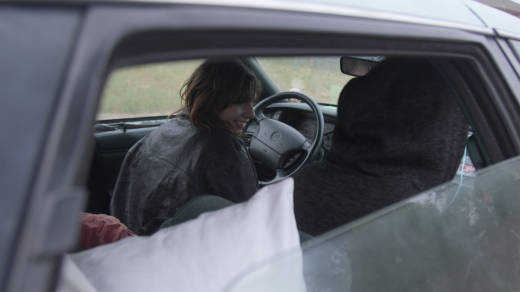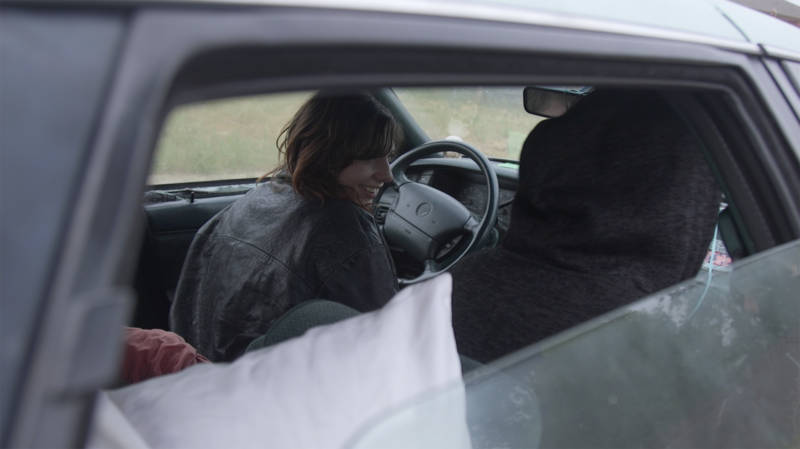The parking spaces were donated to the program by local churches and businesses that don’t use them at night. Catholic Charities provides portable bathrooms and safety patrol in the parking lots. There's an added bonus: Social workers know where to reach participants when housing and other opportunities become available.
Holmes says she still remembers the night the program opened. A teenage girl sprinted by her on the way to the toilet. When Holmes tracked her down later, she learned it was the first time the young woman had been able to use a real bathroom all day.
“I was just thinking this 16-year-old girl was trying to stay in school and do everything she was trying to do as a 16-year-old, but out of her vehicle with her mom and her dad,” Holmes says.
The goal of the safe parking program is to offer people stability while they work toward getting back into housing.
“If you’re just trying to stay alive, you’re not going to be able to get to the place where you start thinking about how you get out of homelessness,” Holmes points out.
Nikki, a 24-year-old homeless woman, who does not want us to use her last name, enrolled in the program in May after run-ins with police, neighbors and a man harassing her from the bushes left her fearful of parking alone on the streets at night.
“I was always kind of jumping at the slightest bit of noise,” Nikki says. “I just felt really unsafe and paranoid."
Nikki had to leave her job at a local Whole Foods, where she’d recently been promoted to a supervisor role, because the lack of sleep and stress of being homeless had grown out of control.
Nikki says the safe parking program has given her back some of the peace of mind she lost when she became homeless nearly a year ago. “This is a spot we call our home right now, and just knowing that we could come here at night without feeling like we’re bothering anybody, it’s definitely a lot less stress," she says.
She’s been grateful to have that safe and “guaranteed” place to return to each night after her waitressing shifts. And since Nikki’s partner joined the program, she no longer has to sleep in her car alone.
In recent years, safe parking programs started by other nonprofits have emerged across the state in cities like Santa Barbara, San Diego and, more recently, Los Angeles. Because participants typically are required to move their cars during the day, there’s less fear from communities that the lots will become homeless encampments.
Holmes says that initially some Santa Rosa locals voiced concerns about people like Nikki parking in lots across the city. But after about three months, according to Holmes, many of these fears were put to rest. “They saw that it wasn’t the big concern or misconception that they had in their mind.”
Recently Holmes has been contacted by nonprofits in Santa Clara and Marin counties that are thinking about starting their own safe parking programs.
“Of all the programs I run, this has probably been the one I’ve gotten the most outside questions about,” Holmes says.
Since 2011, Sonoma County has seen a reduction of more than 35 percent reduction in homelessness. Catholic Charities worries that cutting back programs like safe parking will undo some of this progress. Anticipated reductions to federal funding for homeless services has Holmes worried that they are facing yet another round of budget cuts.
She says it’s time for communities to band together at the local level to support programs that offer vital help to the state’s homeless population, which numbers close to 120,000.
In the meantime, Catholic Charities is scrambling to find other parking spaces or shelter beds for people like Nikki, who are losing their spots.
Nikki hopes that she’ll be able to continue being part of the program. “But beggars can’t be choosers,” she says. “We’ll take what’s offered, and they’re really working hard for us getting into a shelter, which I appreciate.”

